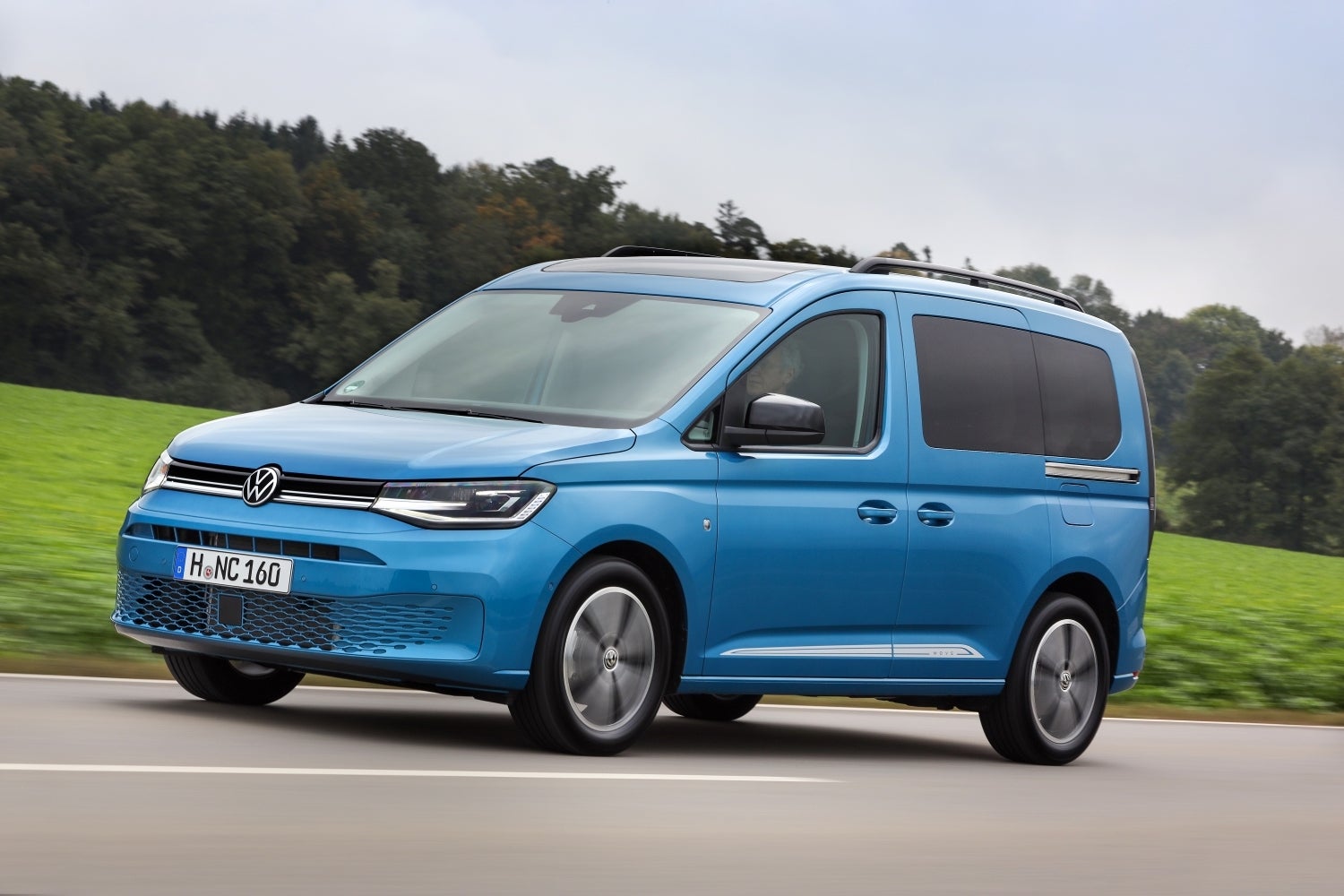
Like Stellantis, Volkswagen has the major advantage of vast scale in the European region. In fact, it’s in a stronger position than its rival thanks to having fewer brands to maintain with fresh products. When it comes light commercials, there’s now a global alliance with Ford Motor Company too.
Transit Connect & Caddy: twins
We’ll see the next Ranger and Amarok in 2022, these pick-ups being twinned and built by Ford. In October, new versions of the Transit Connect and Tourneo Connect were announced, some five months before they become available. Vehicles for European markets are to be made by Volkswagen (Antoninek, Poznan) while Ford is expected to build the Transit Connect Wagon in Mexico (Hermosillo). Their JV gets ever stronger.
The same Polish factory which will make the new Fords is already producing their twins: the latest line of Caddy LCVs along with passenger models. There’s even a campervan called, in true VW style, California and available in two lengths (4,501 and 4,853 mm).
Each new variant was revealed by Volkswagen Commercial Vehicles at a special event in Düsseldorf in February last year although production didn’t start for a further seven months.
Along with the Californias, Cargo (panel van with enclosed superstructure) and PanAmericana (FWD or AWD rugged-look van and MPV), there is an estate (with passenger compartment windows) and various passenger variants (MPVs).
How well do you really know your competitors?
Access the most comprehensive Company Profiles on the market, powered by GlobalData. Save hours of research. Gain competitive edge.

Thank you!
Your download email will arrive shortly
Not ready to buy yet? Download a free sample
We are confident about the unique quality of our Company Profiles. However, we want you to make the most beneficial decision for your business, so we offer a free sample that you can download by submitting the below form
By GlobalDataThe three model grades for passenger versions are called Caddy, Life and Style. The PanAmericana was only announced in June as a replacement for the previous generation Caddy Alltrack.
MQB Evo platform
The new model uses an evolution of the Volkswagen Group’s tried and tested MQB architecture. The big difference over most other models which use this platform is the sliding rear doors. These can be optionally fitted with electric assistance at a cost of GBP162 for each side.
In common with the California, the long wheelbase is also available for the MPV and has the same Maxi suffix. For this reason, it’s easy to see why the Sharan won’t need to be directly replaced, the same applying to the smaller Touran.
Roominess & flexibility
Even the standard length Caddy is a fair bit roomier than the previous generation. Some of that is down to the wheelbase, which now measures 2,755 instead of 2,682 millimetres. As befits the bigger stance, 18-inch wheels are available for the first time in a Caddy although most versions have either 16- or 17-inchers.
Flexibility is a strongpoint with the new model. As well as both second and third row seats being able to be folded, they can all be removed too, turning the Caddy into a van when required.
Loaded roof-high to the first seating row with the second row removed, up to 2,556 litres of space is available and even with five people aboard, maximum luggage capacity is 1,213 litres.
New-style interior features which appear for the first time in a Caddy are the buttons for lights replacing the rotary switch, capacitive sensors on the steering wheel, digital instruments (on higher model grades) and touch-controls for the HVAC rather than real buttons. Interestingly, the volume slider for the music doesn’t appear in this vehicle – might it also be vanishing from the Golf? What was wrong with a knurled dial anyway?
Mix of diesel and petrol options
Not all engines are available in all variants but the whole range includes multiple petrol and diesel alternatives. The 2.0 TDI choices are 55 kW (75 PS), 75 kW (102 PS) or 90 kW (122 PS), linked to six-speed manual or seven-ratio dual clutch gearboxes. The petrol range started out as just the one 84 kW (114 PS) 1.5 TSI but a 96 kW (130 PS) TGI natural gas option is to be added in certain countries, along with an eHybrid, the latter what Volkswagen calls a PHEV.
Even though it’s longer and wider, the new model doesn’t feel that much bigger to drive. The headroom would surely be enough even for someone seven feet tall. In fact, the Caddy is slightly lower than the previous model, which benefits handling.
I tried a standard wheelbase Life powered by the 122 PS diesel. This one was two-wheel drive and the seven-speed DSG did a very good job of filtering out wheelspin in spite of many greasy roads and 320 Nm of torque. I can see how some buyers would want the added assurance of 4MOTION though.
Volkswagen quotes a top speed of 116 mph, a zero to 62 mph time of 11.4 seconds and CO2 emissions of 135 g/km. Combined consumption is 55.4 mpg and with mostly just me on board, the real world number was 53 mpg, so an excellent result.
Caddy Life standard wheelbase pricing starts at GBP29,149 (102 PS 2.0 TDI manual).



